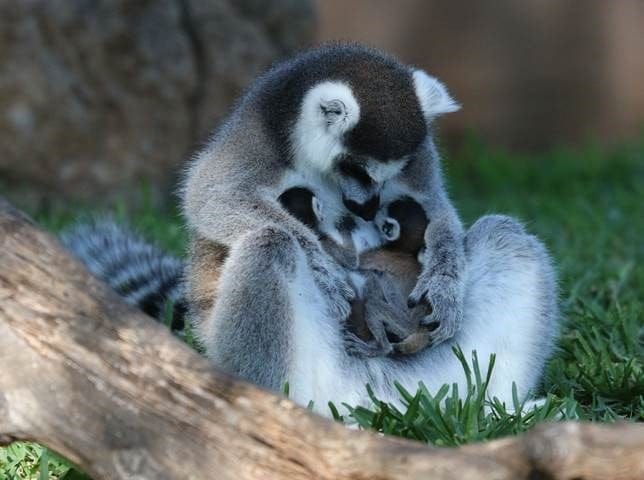The Ogige Honolulu announced the birth of twin ring-tailed lemurs, the world’s most endangered mammals. The twins are the offspring of parents Remi, a five-year-old female, and Finn, a four-year-old male. Their 10-month old brother, Clark, was born at the Honolulu Zoo on June 10, 2019. Both parent lemurs arrived separately at the Honolulu Zoo in the fall of 2018 with hopes of bearing offspring. That happened with these twins on April 18, 2020, Easter Sunday.
“The Honolulu Zoo is pleased and excited to have twin newborn lemurs to expand our lemur collection and help further the conservation of this endangered species,” said Honolulu Zoo Director Linda Santos. “Both babies and mother are doing well together with the entire family.”
Ring-tailed lemurs are listed as endangered and can only be found living in the wild in Madagascar. They are recognized for their approximate 2-foot long black and white banded tails. The gestation period for lemurs is approximately 4.5 months.
The International Union for Conservation of Nature (IUCN) considers lemurs to be the world’s most endangered mammals, noting that as of 2013, up to 90 percent of all lemur species face extinction within the next 20 to 25 years. Their main threats are hunting and trapping, logging and wood harvesting, and converting forests into agricultural land. The Honolulu Zoo worked together with the Association of Zoos and Aquariums’ (AZA) Ring-Tailed Lemur Species Survival Plan (SSP) to bring the breeding pair to the zoo.
The primates, which are unique to the island of Madagascar, are threatened due to habitat loss from agriculture, illegal logging, charcoal production and mining, according to the IUCN. What’s more, this ongoing destruction impacts the nation’s striking biodiversity as a whole, says Global Wildlife Conservation’s chief conservation officer Russ Mittermeier.
The 5 lemurs are living at the Honolulu Zoo’s Primate Islands. The zoo remains closed at this time due to the COVID-19 pandemic.
IHE Ị GA-Ewepụ na edemede a:
- The International Union for Conservation of Nature (IUCN) considers lemurs to be the world’s most endangered mammals, noting that as of 2013, up to 90 percent of all lemur species face extinction within the next 20 to 25 years.
- The Honolulu Zoo worked together with the Association of Zoos and Aquariums' (AZA) Ring-Tailed Lemur Species Survival Plan (SSP) to bring the breeding pair to the zoo.
- “The Honolulu Zoo is pleased and excited to have twin newborn lemurs to expand our lemur collection and help further the conservation of this endangered species,” said Honolulu Zoo Director Linda Santos.























